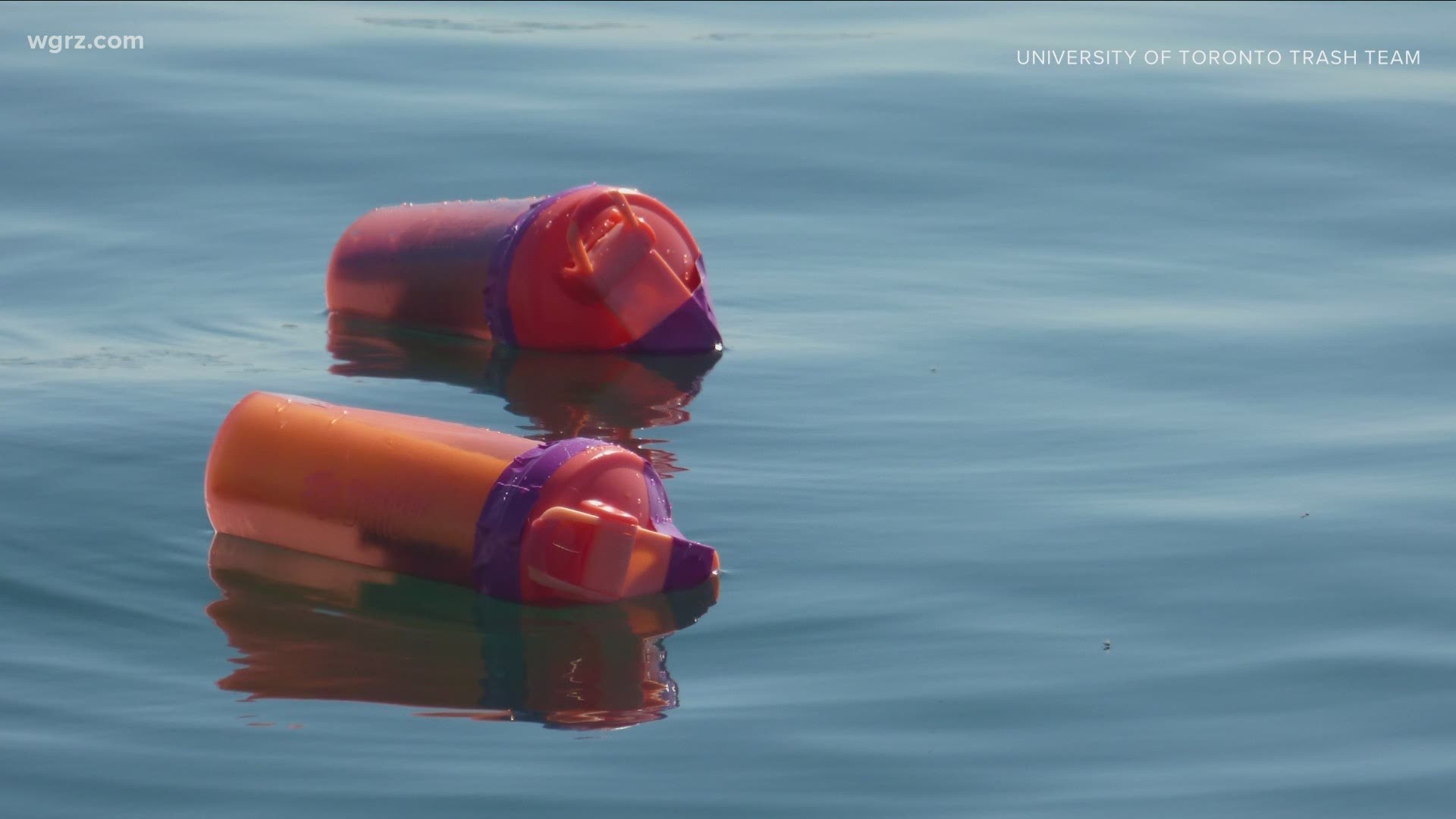TORONTO, ON — If you happen to see any orange plastic bottles floating in Lake Ontario, leave them be.
They might look like trash in the water, but they're actually part of a research project being conducted by the University of Toronto's Trash Team — a science-based community outreach group made up of undergrads, graduate students, researchers, and volunteers.
"We're all about creating waste literacy within our local community while decreasing our plastic pollution in our ecosystems," said Cassandra Sherlock, the team's community outreach and research specialist.
The U of T Trash Team is using the blender bottles to learn about plastic pollution in the lake, how it travels, where it travels, and develop ways to stop it.
"They have little GPS trackers inside, and they report their location hourly. The whole objective of this project is to understand where does litter go and accumulate in our harbors so we can inform solutions to our plastic problems," Sherlock said. "You throw something away in the garbage and don't really think about where its next steps are and where it ends up."
The team threw 27 bottles into Toronto Harbour, and they will track their movement through GPS for several weeks and months. The data will then be analyzed and used to create solutions to reduce plastic pollution.
Chances are most of the bottles will stay closer to Toronto, but high winds and strong currents can carry them closer to Western New York. One is currently floating in Lake Ontario near Rochester.
Sherlock says that's one reason why research happening north of the border is still important for people in Western New York and communities all along the lake.
"That kind of tells us that our litter can end up on your side of the lake, and it's quite possible that your litter can end up on our side of the lake," said Sherlock. "The more ways we can better understand the pathways of litter, the better informed solutions on how to get rid of it and stop it at the source. We all share this lake, and we need to all equally care about it."
The team hopes some of the bottles end up in trash captor devices (think floating garbage cans) that were installed in Lake Ontario near Toronto in 2019. They catch floating debris.
The data from the #taggingtrash project will help determine where additional captors could be placed in the future.
So what should you do if you find one of the bottles?
Don't take or touch the bottles — just leave them where they are. It's all in the name of science!
You can take a picture and tag the U of T Trash Team on social media. You can also scan the QR code on the bottom for more information on the project.
And whatever you do, don't throw the bottles out. People mistook a few bottles for trash and tossed them in the garbage. The GPS devices actually tracked them to a landfill several hours from Toronto.
"It shows that people really care about litter on their shorelines, but this is not litter. This is going to help us solve that issue. If you see it, leave it be unless that date has passed already," said Sherlock.
Each bottle has instructions and a date on it. There are instructions to follow if you happen to locate a bottle after that date. The team will work with people to retrieve the bottle and GPS tracker inside.

